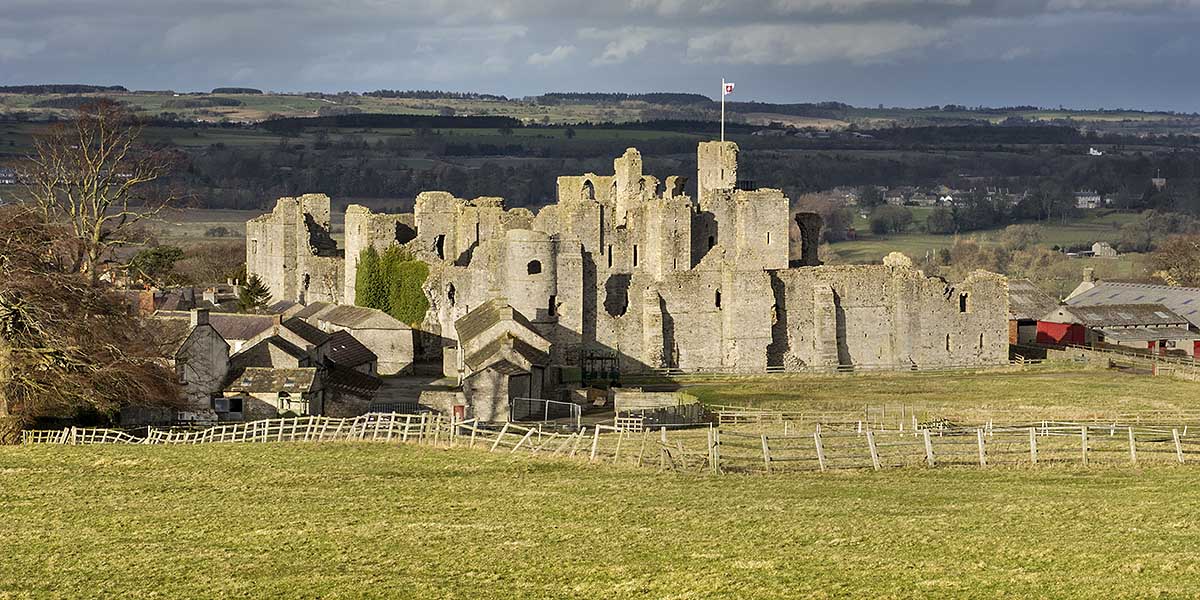Significance of Middleham Castle
Middleham is an excellent surviving example of a medieval castle, with substantial 12th-century remains and later buildings which show the castle’s development into a high-status baronial residence. It is equally important for the many personalities associated with it, particularly the Neville family and Richard, Duke of Gloucester, later Richard III.

Keep
The great tower or keep at Middleham is one of the largest in England, and an outstanding example of late 12th-century northern architecture. It is also one of the largest ‘hall keeps’ in the country (a keep consisting of a basement and only one upper storey).
Unusually, the keep when first built seems to have been enclosed by a simple ditch with timber defences, rather than a stone curtain wall as found in other Norman castles. Even when the stone curtain wall was built in the early 1300s, it was low and not particularly thick – its purpose seems to have been to improve the castle’s accommodation, rather than its defences.[1] This suggests that Middleham was intended as a great house, rather than the type of fully defensible fortification that was common in the 12th and 13th centuries.
Domestic Accommodation
The first-floor chambers that surround the keep demonstrate the increasing refinement of the accommodation for lords and their households in castles in the later Middle Ages.[2] Although much of the inner walls of these ranges has been robbed, it is still possible to appreciate the number of well-appointed rooms in the inner court (see Description of Middleham Castle).
Associations
Middleham is equally important for the numerous historical personalities associated with the castle. Its most prominent owners were the Nevilles, one of the most powerful families in England in the later Middle Ages.[3] From the late 13th century the Nevilles held extensive northern estates, not only Middleham but also at nearby Sheriff Hutton and Raby.
The Nevilles played a major role in the Wars of the Roses (1455–85), particularly Richard, Earl of Warwick (1428–71), known as ‘the Kingmaker’.[4] Warwick was instrumental in securing the throne for Edward IV in 1461, but his later rebellion against the king saw Edward IV briefly imprisoned at Middleham Castle in 1469.
Richard III spent much of his youth at Middleham Castle, being brought up as a member of Warwick’s household. He later married Warwick’s daughter, Anne Neville, and the castle became one of their northern homes. Richard’s son, Edward, Prince of Wales, was born and died at the castle. Richard also established a collegiate church of priests in the town’s parish church.[5]
READ MORE ABOUT MIDDLEHAM CASTLE
Footnotes
1. DF Renn, Norman Castles in Britain (London, 2nd edn, 1973), 243–4; J Goodall, The English Castle, 1066–1650 (New Haven and London, 2011).
2. A Emery, Greater Medieval Houses of England and Wales, 1300–1500, vol 1: Northern England (Cambridge, 1996), 368–72; BM Morley, ‘Aspects of fourteenth-century castle design’, in Collectanea Historica: Essays in Memory of Stuart Rigold, ed A Detsicas (Maidstone, 1981), 109–11.
3. CR Young, The Making of the Neville Family in England, 1166–1400 (Woodbridge, 1996).
4. D Jones, The Hollow Crown: The Wars of the Roses and the Rise of the Tudors (London, 2014).
5. J Raine, ‘The statutes ordained by Richard Duke of Gloucester for the College of Middleham, 1478’, Archaeological Journal, 14 (1857), 160–70 (accessed 28 June 2016).
